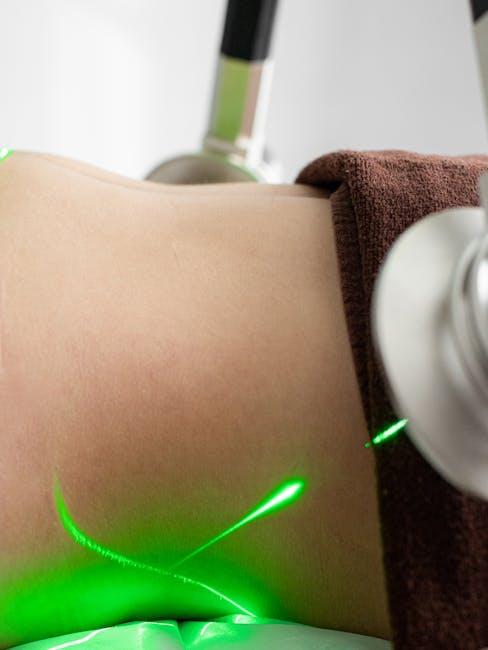Achieving weight loss success goes beyond simply watching the numbers on the scale. Understanding and tracking your body fat percentage is a crucial component in crafting a comprehensive and effective weight loss strategy. Unlike weight, which can fluctuate due to various factors such as water retention and muscle gain, body fat percentage offers a more accurate reflection of your body’s composition and overall health. This instructive guide will provide you with authoritative insights into the methods and tools available for accurately tracking your body fat percentage, empowering you to make informed decisions on your weight loss journey. By mastering this essential aspect of fitness monitoring, you will be better equipped to set realistic goals, tailor your exercise and nutrition plans, and ultimately achieve sustainable results.
Understanding the Importance of Body Fat Percentage in Weight Loss
Tracking body fat percentage is crucial for effective weight loss because it offers a more comprehensive understanding of your body composition than simply monitoring weight alone. Unlike the scale, which can fluctuate due to water retention or muscle gain, body fat percentage provides insight into how much of your weight is fat compared to lean mass. This distinction is important because maintaining or increasing muscle mass while reducing fat can lead to better health outcomes and improved physical performance.
Consider these key benefits of monitoring your body fat percentage:
- Precision: It allows for a more accurate assessment of your fitness progress, as you can identify changes in muscle and fat independently.
- Motivation: Seeing a reduction in body fat percentage, even when the scale remains the same, can be highly motivating.
- Health Indicators: High body fat percentage is linked to increased risk of various health issues such as heart disease and diabetes, so tracking it can help mitigate these risks.
- Customized Goals: Understanding your body composition enables you to tailor your diet and exercise plans more effectively to achieve specific health and fitness goals.

Choosing the Right Tools and Methods for Accurate Measurement
To effectively track your body fat percentage and ensure weight loss success, selecting the right tools and methods is crucial. Calipers are a popular choice due to their affordability and ease of use, allowing you to measure skinfold thickness at various body sites. Bioelectrical Impedance Analysis (BIA) devices offer a more tech-savvy option, using electrical currents to estimate body composition. For those seeking high accuracy, DEXA scans provide detailed insights but may require a trip to a specialized facility.
When choosing a method, consider factors such as:
- Budget: Determine how much you’re willing to invest in measurement tools.
- Convenience: Consider how easy it is to use the tool and incorporate it into your routine.
- Accuracy: Some methods are more precise than others; align your choice with your goals.
- Frequency: Decide how often you plan to measure your body fat and select a method that accommodates this.
Balancing these factors will guide you in choosing the most suitable approach, ensuring you have reliable data to monitor your progress and adjust your weight loss strategy effectively.

Integrating Body Fat Tracking into Your Fitness Routine
Incorporating body fat tracking into your fitness routine can significantly enhance your weight loss journey by providing a more comprehensive understanding of your body’s composition. Unlike merely tracking weight, which can fluctuate due to various factors like water retention, monitoring body fat percentage offers a clearer picture of your progress. To seamlessly integrate this into your routine, consider the following strategies:
- Choose the Right Method: Select a reliable method for tracking body fat, such as bioelectrical impedance scales, skinfold calipers, or DEXA scans. Each method has its pros and cons, so choose one that fits your budget and accuracy needs.
- Consistency is Key: Measure your body fat percentage at the same time of day and under similar conditions to ensure accuracy. Aim for once a week to track changes over time without getting caught up in daily fluctuations.
- Set Realistic Goals: Understand that reducing body fat is a gradual process. Establish achievable milestones to keep you motivated and focused on long-term success.
By focusing on these strategies, you’ll gain valuable insights that can help tailor your diet and exercise plans, leading to more effective and sustainable weight loss results.
Interpreting Results and Adjusting Your Weight Loss Strategy
Understanding your body fat percentage is a powerful tool in evaluating the effectiveness of your weight loss efforts. As you track this metric, it’s crucial to interpret the results accurately to make informed decisions about your strategy. Fluctuations are normal and can be influenced by factors such as hydration levels, time of day, and recent physical activity. Therefore, consider measuring at the same time of day and under similar conditions to ensure consistency.
If your body fat percentage isn’t decreasing as expected, it might be time to adjust your approach. Consider the following strategies:
- Reassess your diet: Ensure you’re in a caloric deficit and consuming enough protein to support muscle maintenance.
- Increase physical activity: Incorporate more cardio or resistance training to boost fat loss.
- Monitor stress levels: High stress can lead to hormonal imbalances that hinder weight loss.
- Evaluate sleep quality: Poor sleep can affect metabolism and appetite regulation.
Adjustments should be gradual and based on consistent tracking data to ensure they align with your overall health goals.
